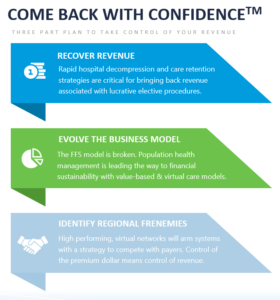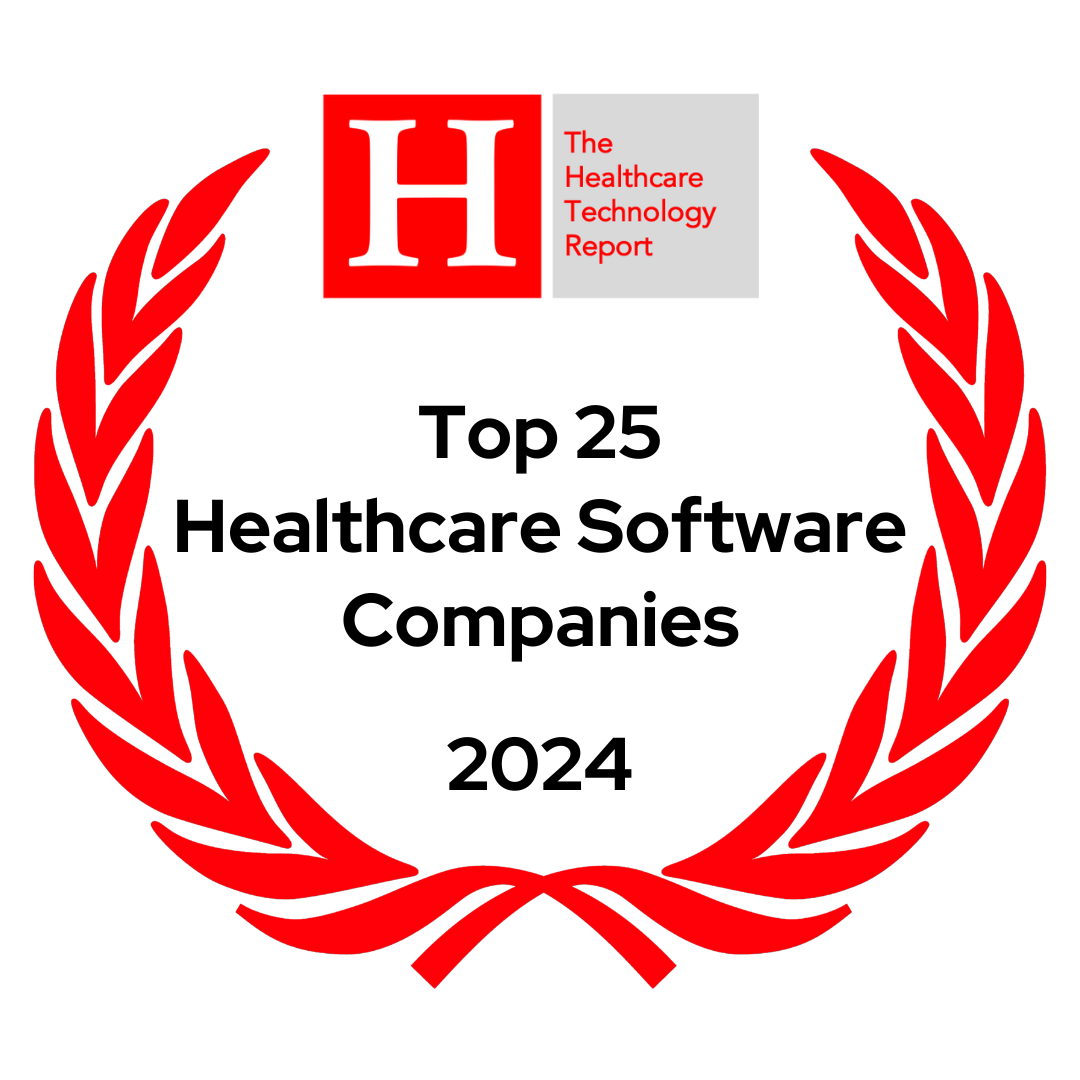A pathway for health systems to restore revenue and long-term sustainability
Nigel Ohrenstein, SVP Eastern Region
You don’t need to be a healthcare expert to know that many health systems in the US are facing a revenue challenge of historic proportions. With the gradual restart of elective procedures and influx of government funding, systems will recover some of the lost revenue but are unlikely to be made fully whole on these sources alone. Patients will continue to delay or forego care out of fear of exposure to COVID-19 or concerns over ability to pay. With the significant loss of employment, payer mix will shift unfavorably towards an increase in Medicaid and uninsured patients. The recovery will not be ‘V’ shaped.
For years, health systems have had a relatively simple playbook. They engaged in an arms race against other systems to attract as many high paying commercial patients as possible: new medical towers were built, sub-specialty service lines were formed, and independent physician groups were acquired to maximize referral volume and drive revenue into the hospital business. It is a business model that has long seemed recession-proof. Most health system executives recognized before COVID-19 that this business model was unsustainable. In the context of a strong economy and increasing premiums, however, most executives have been reluctant to “self-disrupt” and diversify their revenue model in advance of a market shift. In January, at the annual J.P. Morgan Healthcare Conference, health system after health system touted their excellence at managing populations in order to succeed in value-based care, while more quietly acknowledging that most remain highly tied to the fee-for-service (FFS) system. This business model, that has served health systems so well, is broken. As Sarah Kliff said recently in the New York Times, “The COVID-19 outbreak has shown the vulnerability of this business model.”
A Three-Part Plan to Come Back with Confidence™

A general involved in the New York City coronavirus relief recently said, “When uncertainty is high, answers need to be simple. If the answer is not simple and executable, it is not an answer.”
To that end, we believe this three-part plan will enable health systems to Come Back with Confidence™.
1. Recover Revenue
Yes, focus on the old model to stop the bleeding. While this is not a long-term solution, it is necessary given the preponderance of volume-based reimbursement models in the market. There are a number of strategies to rapidly recapture as much lost revenue as possible. For example, health systems typically see about 40% of care that should remain in their system instead go outside to competitors in the market. Now more than ever, they need an effective, comprehensive network optimization solution that drives care retention as well as hospital decompression to bring lucrative elective procedures back into their facilities.
However, focusing on maximizing FFS revenue alone is a race to the bottom strategy that leaves systems vulnerable to commoditization. If a health system executes on only Part I of this plan it will be insufficient. A new business model is required to improve resilience and avoid commoditization.
2. Evolve the Business Model
As stated above, focusing only on revenue will be insufficient. It will leave systems vulnerable to the same volume-based disruption. Health systems need more control over their revenue including a more diversified revenue portfolio. Last week I was chatting with a health system executive who has a sizeable amount of lives under risk in return for more of the premium dollar. He walked me through the differences between his FFS and value-based populations in the current crisis. While of course he is concerned about the impact of the COVID-19 patients, he felt far more comfortable being in a position where he owns much of the premium dollar and can manage his future predictably. Going “at risk” is just one model of diversification.
Another Lumeris partner is currently doubling down on their direct-to-employer offerings. With their own business under strain, many employers will welcome a solution that reduces the cost of care delivery for them while improving the quality of care their employees receive. Similarly, the acceleration of telehealth, the rapid willingness to receive care at home and the potential to practice across state lines present significant opportunities for forward-thinking health systems to expand care delivery outside of their traditional service area. These factors will also enable health systems to be far more judicious in selecting which service lines their facilities will provide to the community. This is an opportunity to expand high-performing specialties, and potentially reduce investment in other service lines. Like any business in any sector, the more you control your revenue, the stronger your business will be. Systems regularly pay large sums to consulting companies for strategic support, but designing the business model is not the hard part. Executing on it is. It requires an enormous amount of dedication, expertise and a commitment to excellence.
3. Identify Regional “Frenemies”
If you ask most health systems who their primary competitor is, they will likely say the closest health system is their major competitor. However, health systems need to look more broadly at their competitors. Payers and primary care aggregators are two examples of organizations with business models that want to keep as much revenue for themselves at the expense of the health system. As we previously discussed, health care was historically thought to be recession-proof. Our industry will now be revenue constrained. While payers have benefited from fewer services this year, they will suffer from a major drop in commercial members and associated income next year. Payers will tighten their “control” of the premium dollar and when the immediacy of this crisis passes, will look to the health system to take a reduction in rates to offset their loss.
The third step in a health system’s recovery is to extend their view beyond their immediate service area and identify which health systems they can partner with. A more mobile, virtually integrated healthcare system creates an opportunity for a health system to look further and identify “frenemies.” Regional collaborations have long focused on joint purchasing or participation in an ACO but that is yesterday’s strategy. Today presents an opportunity to create a completely different type of high-performing network that can truly deliver superior outcomes to patients and enable health systems to have a sustainable business model. And when the next pandemic comes, the system will also be a highly effective “public healthcare” network.
Speed is of the Essence
The COVID-19 pandemic response will offer many lessons to consider into the future. One is that speed is truly of the essence. Speed in decisive action by local officials has meant life or death for their communities. Similarly, decisive action will determine a health system’s ability to thrive not just next year but for many years to come. The virus has created a window of opportunity for effective leaders to steer their ships to the right course.
One of my soccer coaches used to shout at us “to manage the game.” By that he meant, dominating for the first ten minutes doesn’t win you the game and sprinting for the last 10 minutes is normally too late. You have to have a game plan—the easy part—but then you have to execute your game plan. Health systems are in crisis, but they can’t simply focus on trying to restore lost revenue. For many, that will be a going out of business strategy.
Nigel Ohrenstein is the SVP of the Eastern Region for Lumeris. He has spent his career focused on how to execute on strategies to transform the US Healthcare system. For Lumeris, he is working with health systems to help them execute on these and other strategies. If you would like to discuss this article or see how Lumeris can help you Come Back with Confidenceô, please email him at nohrenstein@lumeris.com

